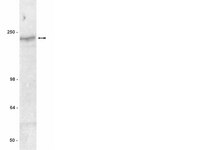Comparative biology of cystic fibrosis animal models.
Fisher, JT; Zhang, Y; Engelhardt, JF
Methods in molecular biology (Clifton, N.J.)
742
311-34
2011
显示摘要
Animal models of human diseases are critical for dissecting mechanisms of pathophysiology and developing therapies. In the context of cystic fibrosis (CF), mouse models have been the dominant species by which to study CF disease processes in vivo for the past two decades. Although much has been learned through these CF mouse models, limitations in the ability of this species to recapitulate spontaneous lung disease and several other organ abnormalities seen in CF humans have created a need for additional species on which to study CF. To this end, pig and ferret CF models have been generated by somatic cell nuclear transfer and are currently being characterized. These new larger animal models have phenotypes that appear to closely resemble human CF disease seen in newborns, and efforts to characterize their adult phenotypes are ongoing. This chapter will review current knowledge about comparative lung cell biology and cystic fibrosis transmembrane conductance regulator (CFTR) biology among mice, pigs, and ferrets that has implications for CF disease modeling in these species. We will focus on methods used to compare the biology and function of CFTR between these species and their relevance to phenotypes seen in the animal models. These cross-species comparisons and the development of both the pig and the ferret CF models may help elucidate pathophysiologic mechanisms of CF lung disease and lead to new therapeutic approaches. | 21547741
 |
Analysis of CFTR folding and degradation in transiently transfected cells.
Diane E Grove,Meredith F N Rosser,Richard L Watkins,Douglas M Cyr
Methods in molecular biology (Clifton, N.J.)
741
2011
显示摘要
Misfolding and premature degradation of F508del-CFTR is the major cause of cystic fibrosis. Components of the ubiquitin-proteasome system function on the surface of the endoplasmic reticulum to select misfolded proteins for degradation. The folding status of F508del-CFTR is monitored by at least two ER quality control checkpoints. The ER-associated Derlin-1/RMA1 E3 complex appears to recognize folding defects in CFTR that involve misassembly of NBD1 into a complex with the R-domain. In contrast, the cytosolic Hsp70/CHIP E3 complex appears to sense folding defects that occur after synthesis of NBD2. Herein we describe methods that allow for the study of how modulation of these ER quality control factors by siRNA impacts CFTR folding and degradation. The experimental system described employs transiently transfected HEK293 cells and is utilized to monitor the biogenesis of CFTR by both Western blot and pulse chase studies. Methods to detect complexes formed between CFTR folding intermediates and ER quality control factors will also be described. | 21594788
 |
Epigenetic memory at malaria virulence genes.
Chookajorn, T; Dzikowski, R; Frank, M; Li, F; Jiwani, AZ; Hartl, DL; Deitsch, KW
Proceedings of the National Academy of Sciences of the United States of America
104
899-902
2007
显示摘要
During its red blood cell stage, the malaria parasite Plasmodium falciparum can switch its variant surface proteins (P. falciparum erythrocyte membrane protein 1) to evade the host immune response. The var gene family encodes P. falciparum erythrocyte membrane protein 1, different versions of which have unique binding specificities to various human endothelial surface molecules. Individual parasites each contain approximately 60 var genes at various locations within their chromosomes; however, parasite isolates contain different complements of var genes, thus, the gene family is enormous with a virtually unlimited number of members. A single var gene is expressed by each parasite in a mutually exclusive manner. We report that control of var gene transcription and antigenic variation is associated with a chromatin memory that includes methylation of histone H3 at lysine K9 as an epigenetic mark. We also discuss how gene transcription memory may affect the mechanism of pathogenesis and immune evasion. 全文本文章 | 17209011
 |













